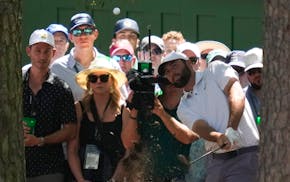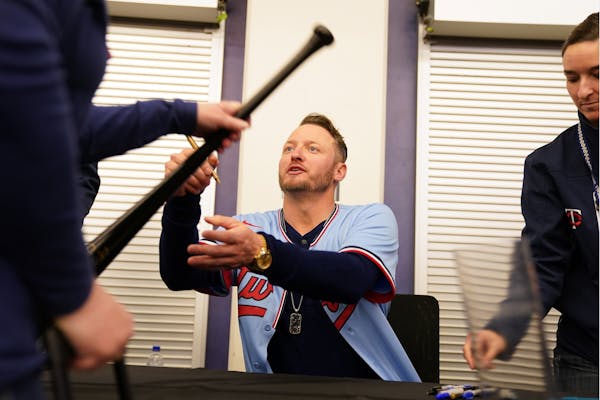How could the Twins enter a season with an incomplete rotation? How could they hope to win in the postseason without multiple aces?
These are fair questions. Especially if you asked them before the 1987 and 1991 seasons.
When the Twins spent $92 million on third baseman Josh Donaldson, the predictable reaction online went something like: "Now get some pitching."
This sentiment isn't wrong, exactly. Yes, the Twins could use one more high-end starting pitcher. What the sentiment lacks is perspective.
This perspective:
The Twins won 101 games last year, and they are a much better team right now than they were last January, or even last July.
On paper, this may be the most complete Twins team ever assembled.
It's hard to compare a team that hasn't played a game yet with the 1965 Twins or the '25 Senators, but fans shouldn't let this team's one obvious flaw — the lack of a dominant starting pitcher who has excelled in the postseason — distract from the quality of the roster.
Donaldson provides an immediate upgrade to the lineup and defense. Last year Miguel Sano, Byron Buxton and Luis Arraez played in a combined 284 big league games. If the Twins have any injury luck, that number should top 400 this year.
As of midsummer of 2019, the Twins were relying on relievers who would falter or fail, including part-time closer Blake Parker. Along with the injuries that limited Buxton and Sano, the Twins were constantly managing minor injuries to their regulars.
This year, the bullpen will include Taylor Rogers, Tyler Clippard, Trevor May, Tyler Duffey, Brusdar Graterol, Sergio Romo and a slew of young arms.
The rotation has an under-construction feel, but this team won 101 games last year despite giving 29 starts to Martin Perez (5.12 ERA).
This team's bullpen depth should help them survive in the early season while Miguel Pineda is serving his suspension and Rich Hill is rehabbing, and Homer Bailey pitched well the last two months of last season.
If the Twins made the playoffs without adding any pitching, their postseason rotation could be Jose Berrios, Jake Odorizzi, Pineda and Hill. That may not be intimidating; neither is it hopeless. At least that's what Twins history teaches us.
The 1987 Twins who became legends for winning the World Series were not a great team by any major measurable other than their clutch play in the postseason. They won 85 regular-season games and then rode their home-field advantage to a championship.
They won it all with two reliable starting pitchers and a patchwork bullpen.
The '91 Twins were demonstrably better than the '87 squad, but also had flaws. Instead of Gary Gaetti at third base, they alternated Scott Leius and Mike Pagliarulo. They had three reliable starters — Jack Morris, Kevin Tapani and Scott Erickson — only because Erickson exceeded all expectations and Morris excelled at an advanced age.
Just like the '87 team, the '91 squad wasn't exceptional on paper. What both teams shared was a talented core of veteran position players and a manager capable of wringing the most from a pitching staff.
The 2020 team should score enough runs, play well enough in the field and have enough desirable options out of the bullpen to survive April while giving young starting pitchers a chance to prove themselves.
"I feel like we're deep,'' President of Baseball Operations Derek Falvey said. "We have a good position-player roster. On the pitching side, I believe we have some depth. I think we have some guys who are really on the come, and a deeper bullpen. I feel really good about the way the roster is built right now and if there are opportunities to add to it, we'll find a way to do that before the season starts.''
I expect the Twins to add what they would term an "undervalued'' starter or two in the next three months. I expect them to look hard at the midseason trade market.
But even if they stand pat, they will field the best team, on paper, in the modern era of Twins baseball.
Jim Souhan's podcast can be heard at TalkNorth.com. On Twitter: @SouhanStrib. • jsouhan@startribune.com

Souhan: Why Tiger Woods should keep swinging
Souhan: Scheffler wins Masters again, shows what makes him special
Morikawa falters in final round at Masters

Keeping up with the Joneses who helped design Augusta National's classic back nine


